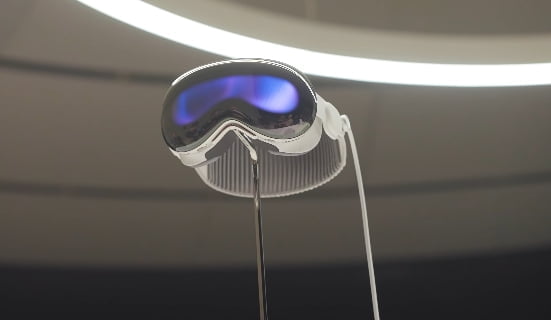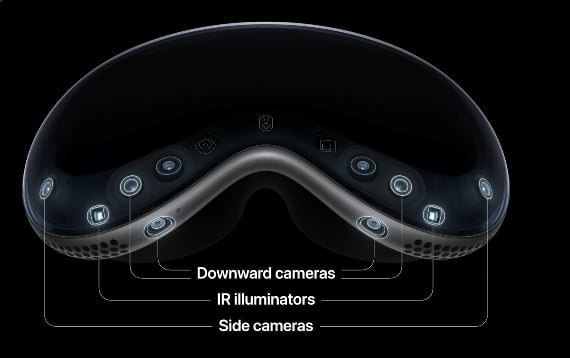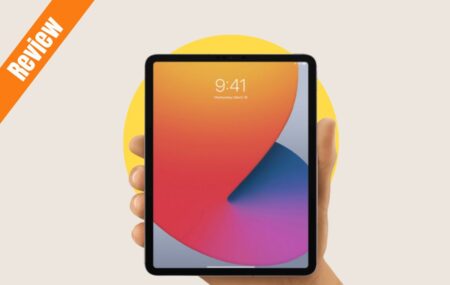In WWDC 2023 Apple unveiled Apple Vision Pro headset, a groundbreaking device with the potential to revolutionize the way we interact with technology. The price of apple AR/VR headset is $3500, the headset promises to offer a seamless and immersive experience that could potentially replace smartphones in the future. Let’s know how the Apple Vision Pro works, its strengths and weaknesses, and the motivations behind Apple’s foray into Ar/Vr.
Unveiling the Apple Vision Pro

The centerpiece of the Apple Vision Pro headset is its dual screens, one for each eye. These two screens, boasting an astonishing 64 times the pixel density of an iPhone, create a sense of realism, allowing users to feel as if they can reach out and touch the digital objects. While similar technologies have been introduced before, Apple’s implementation stands out due to its exceptional screen quality and attention to detail.

Beyond just being a pair of movie glasses, the Vision Pro represents Apple’s vision of a future where headsets become the next generation of personal computing devices. With the ability to offer a more immersive experience and a larger virtual display, the Vision Pro aims to go beyond just consuming content and become a means of communication and self-expression, providing a new dimension to familiar apps and interactions.
Read More: Samsung Galaxy S23 Ultra Review
Cutting-Edge Features

The Vision Pro have sensors and cameras, including 3D cameras and LIDAR scanners, to capture the user’s surroundings and create a 3D view of the room. This allows for the placement of virtual objects within physical spaces, giving a realistic presence and interaction with the environment. Furthermore, the Apples headset features a second set of cameras inside, enabling facial tracking and the generation of photorealistic digital avatars during video calls.
One standout feature is the control mechanism of the headset, which leverages eye tracking technology. By precisely tracking the user’s gaze and eye movements, the Vision Pro uses the eyes as a cursor, eliminating the need for traditional input devices. The ability to interact with the headset using natural finger movements, tracked by the cameras, further enhances the seamless user experience. Additionally, the headset incorporates Siri for voice input and can be connected to external keyboards and mice for added convenience.
Power and Portability

Unlike other VR or AR headsets that rely on external devices for processing power, the Vision Pro boasts its own dedicated M2 chipset, delivering laptop-level performance. This standalone design frees users from the constraints of being tethered to a console or PC. To ensure portability, the headset utilizes an external battery pack, which, although unusual for Apple, helps distribute the weight and size more comfortably for daily wear.
Performance and Hardware

The Apple Vision Pro combines the best features of Apple’s existing products into one comprehensive device. With the display quality of the Pro Display XDR, the computing power of a MacBook, and the added dimension of AR and VR experiences, the headset promises a comfortable and immersive content consumption platform. It also introduces a new way of capturing memories, offering full three-dimensional recordings that can change the paradigm of traditional two-dimensional photos and videos.

The intimate nature of the headset, is its ability to immerse users in their own digital worlds, raises questions about the impact on shared experiences and human connections. Furthermore, the uncanny valley effect of the reconstructed facial avatars during FaceTime calls might initially feel uncomfortable for some users.
Apple’s Motivation and Future Prospects
Apple’s decision to venture into the VR and AR headset market, despite the current challenges and limited market demand, demonstrates its long-term strategic vision. By being an early player in this evolving technology, Apple aims to shape and dominate a product category that could potentially replace smartphones as the primary personal computing device.
The release of the Apple Vision Pro is not an isolated event but rather a culmination of gradual technological advancements and groundwork laid by Apple over the years. Apple investing in AR technologies, such as ARKit and LiDAR scanners, specializing in augmented reality hardware and software. The culmination of apple efforts is now visible in the Vision Pro, which represents the next step in Apple’s quest to redefine the way we interact with technology.
Conclusion
The Apple Vision Pro headset offers a tantalizing glimpse into the future of personal computing. With its advanced technology, and seamless user experience. The potential to reshape how we consume content, communicate, and interact with the digital world. While challenges and concerns remain, Apple’s investment in this product category underscores its commitment to pushing technological boundaries and setting the stage for a new era of computing. As the Apple Vision Pro hits the market, it will be intriguing to witness how developers and users embrace this transformative device and unlock its full potential.




